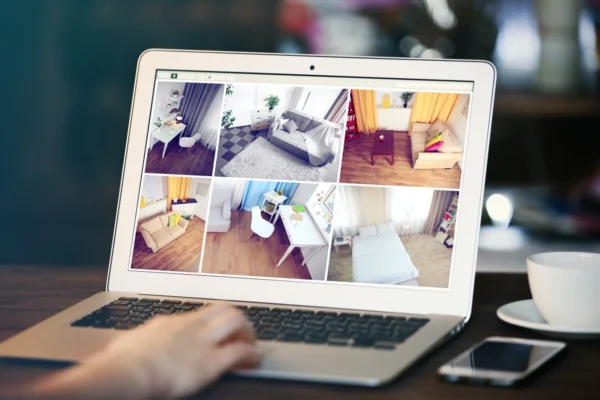Smart homes have brought convenience to our lives, with many functions that used to exist only in science fiction novels now becoming a reality. However, this technology also has its dark side. There are many questions surrounding the data collection, use, and protection measures related to smart homes.
You might think that no one would be interested in the usage of your fridge or door lock, but these devices could potentially serve as entry points for hackers to access personal information. So how do hackers do it? And how can you protect yourself and your family?
Smart home devices connect to the internet and contain small computers that enable them to be remotely controlled. These computers use internet protocols for connectivity and are linked through a central hub, which could be your network router or smartphone. Your smartphone needs to have an application installed to control the smart devices.
These devices are part of the Internet of Things (IoT), which consists of non-standard computing hardware including household appliances, actuators, and sensors. These devices can wirelessly connect to networks and transmit data.
The IoT collects and stores information about your usage patterns, habits, and preferences on devices or networks.
Due to the accumulation of audio and video data, your smart home may pose potential privacy risks. With the increasing digitization of personal information like passports and bank accounts, these risks could become more severe.
Each new device connected to the network brings along new privacy concerns. Many of your private moments and family activities are recorded and analyzed by smart devices.
The risks of data leakage and unauthorized data collection could compromise your privacy and security.
Privacy breaches in smart homes could lead to significant problems. Unauthorized access to video and audio recordings could result in privacy violations and potentially lead to identity theft and extortion. Malicious actors could also cause reputational damage, financial losses, and associated mental distress.
The interconnected nature of devices in smart homes exacerbates privacy issues. For example, data collected by one device could be shared with other devices or third-party services. This third party could be a marketing company, enabling them to understand what custom ads to push to you.
Information could also be shared with other devices, further increasing the risks.
Smart home devices are linked to applications. One out of every ten smart home applications collects data for user tracking. The top three data-collecting smart home applications are myQ (garage and door control), Craftsman (mQ garage door control), and Keurig. There are many other similar applications as well.
Smart home devices also collect data. Amazon tops the list in data collection, gathering three times more data through devices than regular household devices. The collected information includes contact details, health data, and sensitive content related to this information.
Google ranks second, with its primary data collection including location positioning, photos and videos, audio data, and browsing and search history.
Any device could potentially compromise your privacy. For instance, outdoor surveillance devices collect 50% more data than smart home devices on average. Home cameras used for security and baby monitoring have also been targeted in hacker attacks.
When choosing smart home devices, it’s important to research and select trustworthy manufacturers. Ensure you understand what type of data your devices collect and process, as well as who can access this data. Familiarize yourself with the privacy policies of companies you consider.
Another good practice is to use a guest network instead of your main network. This means setting up a separate network for your smart home devices. By doing so, you can prevent visitors (like repair technicians) from accessing your main network and protect the personal data stored within it.
For years, there has been a recommendation that one of the most effective ways to protect information is by using strong passwords. Using “12345” or your birthday as a password is not secure. Use a combination of letters, numbers, and special characters, and change your password regularly. While this may cause some inconvenience, it significantly enhances security.
If a feature is not in use, disable it. Unused features only provide another channel for criminals to steal your information.
Another method is to review the privacy settings of all devices and applications. Disable data collection or forwarding if unnecessary. Data may be listed under “My Activity” or “History.” Evaluate whether this information is useful to you. If you use Alexa or Google Assistant, regularly check recordings and delete them when necessary.
Many smart home devices automatically connect to new devices. Disable or restrict automatic connections to prevent unauthorized access.
According to a report by Science Direct, unauthorized access to smart home systems can allow hackers to activate cameras and voice-controlled devices. In reality, the entire smart home ecosystem has security vulnerabilities.
Take appropriate measures to ensure the protection of your important information and family. Understanding the companies you hire, setting up guest networks, and creating strong passwords are all effective ways to safeguard privacy.

